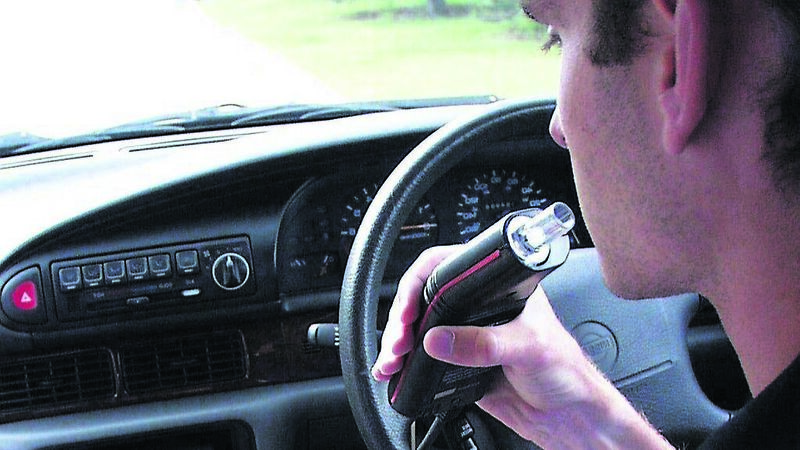We have the technology to stop drink/drug-driving - so let's use it

As the tragedies continue to multiply, particularly among young men, there is heightened concern that the increase is due to a combination of speeding as well as both alcohol and drug use while driving.
The technology to curtail drink-drug driving is now available - it is mystifying why we have not introduced legislation to mandate its use.
Recent reports from the U.S have confirmed that increased use of cannabis has led to significantly more people being killed on national roads - as more people are driving while stoned and drunk.
A study in the American Journal of Public Health (2021) found that the percentage of car deaths involving cannabis has skyrocketed since 2000; rising from 4.2% in 2000 to 11.2% in 2018. Added to that, the percentage of car crash deaths involving a combination of cannabis and alcohol rose from 4.8% to 10.3%.
If the portion of car deaths involving cannabis also increased by a similar amount - between 45-51% - that would mean deaths involving cannabis use increased from one in five in 2018 to about one in three in 2022.
To put it plainly, about a third of all car deaths in the U.S in 2022 are estimated to have involved the use of cannabis.
Moreover, former Director of the U.S Office of National Drug Policy, John Walters, and former Attorney General, Bill Barr, stated in March that “today’s marijuana packs 7 to 30 times the punch of Woodstock era weed”, adding that legalising it was a mistake.
How do these figures apply to the Irish context?
Thirty more people died on Irish roads in 2023 compared to 2022, and many of these were in the younger age group. How many of these deaths were caused by drink/drug-driving?
Assistant Professor at Trinity College Dublin, Dr Michael Gormley said in April that there are multiple reasons why this younger demographic are generally more vulnerable.
“They think, ‘I’m not going to get involved in a collision’. They participate in speeding more. They wear seat belts less and they drive while intoxicated,” he stated.
EU figures show Ireland are one of only six countries where road deaths have increased in recent years.
Experts who spoke on Prime Time in April suggested the increases could be explained by a combination of factors - including driving while intoxicated, speeding, legal enforcement and policing, driver distraction and road layout.
A survey by the Road Safety Authority (RSA) last January revealed increasing laxity in attitudes to drunk driving. One in ten people say they drove having consumed alcohol in the previous year.
The number of people who felt that driving under the influence was unacceptable has dropped from 85% in 2019 to just 73% five years later.
This means that it is becoming increasingly socially acceptable to drink and drive.
The most recent data on the impact of drink-driving on road deaths (from 2015-2019) indicated that over a third of all driver fatalities in those year included a positive toxicology test for alcohol.
Of those, the road deaths typically involved males under the age of 45, with the fatalities occurring in the late evening or early morning and at the weekend.
The Medical Bureau of Road Safety (MBRS) analysed 3,669 positive tests for driving while under the influence of drugs last year, according to Professor Denis Cusack, director of the MBRS.
Cannabis and cocaine appeared most often, with cannabis present in half of all positive tests while cocaine appeared 27% of the time.
How can this high level of drink and drug- driving be challenged?
At a Safe and Sober seminar in January, the RSA discussed the impact of Alcohol Ignition Interlock technology and rehabilitation programmes to help reduce the number of alcohol-related road deaths.
This technology prevents a vehicle from starting if the driver exceeds the set breath alcohol limit.
The then Minister of State at the Department of Transport, Jack Chambers, said that the establishment of a working group to make recommendations for the implementation of an alcohol interlock programme, supported by a drink drive rehabilitation course for high-risk drink offenders, was a key action in the Government’s Road Safety Strategy.
“Data from other countries shows how alcohol interlock programmes help in reducing drink-driving, and therefore the number of alcohol related collisions on the roads,” said Mr Chambers.
Antonio Avenoso, Executive Director of the European Transport Safety Council (ETSC), agrees: “Several EU countries, including Belgium, France, Lithuania and Poland, are now addressing this issue by requiring alcohol ignition interlock devices in the cars of those who have engaged in drink driving, particularly those who do so repeatedly,” he said.
“Italy is also preparing legislation to bring alcohol ignition interlocks into the legal system.”
Research into anti-drunk driving technology has gone on for decades and four main technologies stand out.
Sensors embedded in steering wheels or dashboards that can detect levels of alcohol and carbon dioxide in a driver’s breath.
Touch-based sensors in a steering wheel or other surface can use infrared lights to determine the blood alcohol content in capillaries just below the skin’s surface.
And driver-monitoring systems, which are already common in new cars with advanced driving - these could use eye or head tracking to determine whether a person is likely impaired.
Similarly, many vehicles can already detect lane departures and erratic steering, potentially providing extra signals of driving impaired by alcohol or drug use.
Obviously, this line of technology will cost carmakers and could push up car prices. But technology that goes a long way to curtailing impaired driving is here. Legislation to mandate for the use of this technology in all new cars is long overdue and could be game-changing in reducing fatalities on Irish roads.
Dr Catherine Conlon is a public health doctor in Cork and former director of human health and nutrition, safefood







 App?
App?




